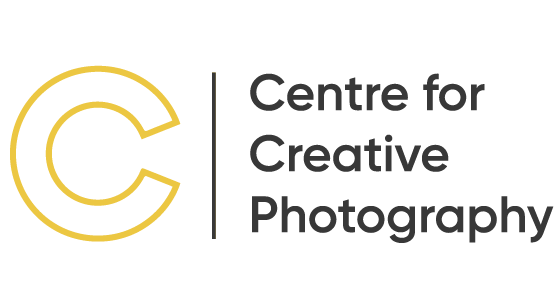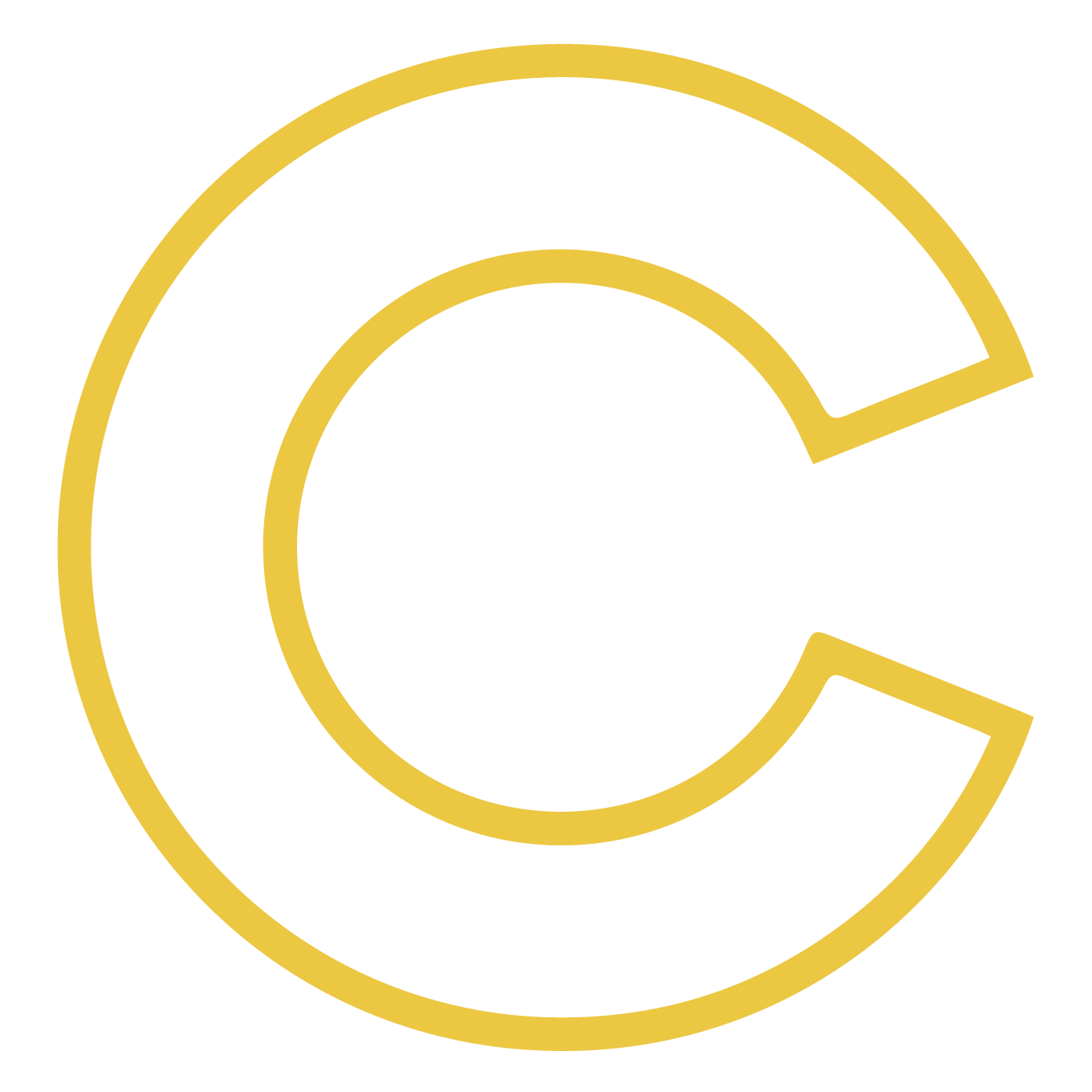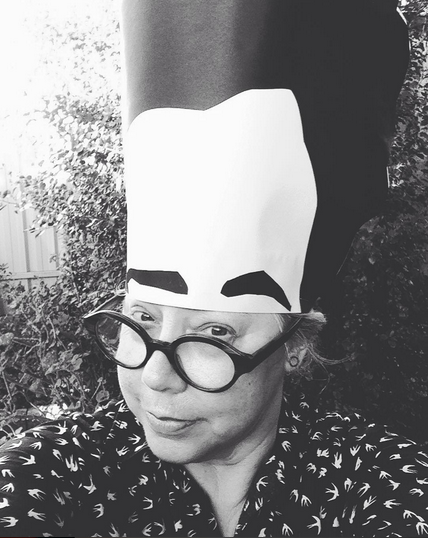20 years on: CCP Graduate Sue Michael
In anticipation of the celebration of the 20 year anniversary of the CCP, last year Aaron and I compiled a range of questions which I sent out to a swag of our alumni. It was requested of them to select and answer about 10 of the questions about their art practice and their journey post CCP which they thought would be relevant and inspiring for the CCP community to ponder. It is my pleasure to give you one of our very early graduates from our time in Stepney, Sue Michael for a wonderfully entertaining read.
A brief introduction to Sue Michael before her instalment:
(you can see some of Sue's work on Instagram and Twitter)
Sue Michael began her art journey with photography in 1996, unable to even change a roll of film. Sue commenced her studies at the CCP in the second Term (that’s Term 3) in the first year of our existence in Stepney – Sue is one of the first students featured in the pinhole class portrait in last month’s CCP@20 instalment standing behind another CCP luminary, Mike Lim.
Sue came to us as a registered nurse with her first degree in Visual Art and Applied Design with TAFE which she earned in 2004. Her first accomplishment studying at the CCP was a certificate II in Creative Photography which I had written and had accredited very early on in 2000 and so Sue was one of the very first graduates from this program. In 2001, Sue then completed the Certificate IV in Creative Photography which I had also written at the same time as the Certificate II and her art practice has been pretty much informed by photography ever since.
Sue then took a hiatus from her studies here and reconnected with her painting with photography well and truly absorbed into her arts practice. Sue and her family however maintained a close friendship with the Blake family with all of us often sharing many meals at our respective homes and catching up at arty-farty events.
In 1998 Sue had a solo exhibition in our Light Gallery in Stepney titled “Sue Michael Domestic Photographer”. Sue returned to study at the CCP in 2010 to gain her Diploma in Photo imaging, (again one of the very first graduates from this program as well). Sue Celebrated this achievement with another solo show called “Sketches for a Rhest-cure “at the relocated and refurbished Light Gallery in Marleston. These highly original images formed the nexus of a self-published colouring book to aid convalescence of which we have copies available here which Sue has donated for any interested readers.
A view of the installation of this wonderful exhibition is below.
Now photography is the quiet, life-blood of her painting. Sue has a large photographic image bank, mainly unseen except those adapted into her paintings - the photographic images, particularly from her favoured plastic cameras, having allowed her to see the poetic inflows and eddies of daily life having left their mark on her wonderfully urbane canvases. Sue Michael is currently completing her PhD in Visual Arts by research at Uni SA and I am extremely pleased to have her as our first featured CCP alumnus…please read on and enjoy Sue’s pearls of wisdom.
- Gavin
More Than 10 Questions: Sue Michael
What first interested you, or made you fall in love with, photography?
During the 1960’s and 70’s my family often held their own slide evenings. Our travels across Australia were like a step further than my grandparents who rarely left their regional towns. The atmosphere at the crowded slide nights was electric and full of great wit, laughter and phenomenological insight. And so I began to associate large format colour images with the height of nourishing social interaction. As a young adult I was fortunate to visit the Pompidou Centre in Paris, again relishing the social engagement with images. It was within this art museum that I was memorably chastised by security for snapping a Giacometti sculpture with my Kodak 110 camera with flash cube.
Why did you choose to study at the CCP?
I had been attending evening life drawing classes at the North Adelaide School of Art. Chance directed me to photography classes after the drawing was cancelled. We had a 1975 Nikon FM at home, so this was the deciding choice to do photography at the CCP rather than another sort of class. I had no idea how to even change a roll of film, let alone the ‘wheels of fortune’ on the camera body. From the earliest weeks I was completely beguiled, fascinated, challenged and curious about making photographic images. The inner passion surprised me. I wanted to learn the breadth of knowledge rather than a specialised depth
Are you making personal work?
Barely a day goes past when I do not meddle with photographic images. It is an intuitive process, where my wilful thoughts are put to the side for a short time in the day. Then access to the cosmos is obtained, through the camera. Instinct lets me know where to go, where to point the camera, where to position myself, when to press the shutter button; the camera ‘dictates’ my activities, not my own rational intellectualism. The genius loci, or the feel of the land, also engages with my instinct. This is a key subject matter for my paintings as well as photographs.
What inspires your work at the moment?
My current Visual Art PhD studies at the University of South Australia concern a more thorough examination of the meanings of place, using Humanistic Geography’s framework (David Seamon’s triadic approach to place) to explore place’s singular characteristics, complexities, ever-moving qualities and perhaps “clearly invisible” qualities. It doesn't take much to inspire me. All sorts of locations can be examined for the interface between people, the geographic ensemble as well as the genius loci. You just have to have your eyes peeled, your camera battery charged and a willingness to be open to reciprocal engagement with the wider world.
What have you done since you studied at the CCP, and what are you doing now?
I am a genre painter, but all my skills relate directly to the tens of thousands of experimental documentations of everyday life through the medium of photography. I completed a Bachelor Visual Art and Applied Design at AC Arts, majoring in Printmaking. A Bachelor Visual Art, First Class Honours was completed at UniSA, prior to beginning my Visual Art PhD. I currently am enrolled at the Turps Art School, London’s Correspondence Course. I have recently been involved in teaching art in the Mid North of South Australia. Together with local residents of the smallest towns there, we are seeking to explore the meanings imbued in place there.
How has photography changed since you commenced your studies?
I was fortunate to learn with some wonderful other students, who had skills, and back ground knowledge far beyond my cache of enthusiasm. There was a level of professionalism amongst the students that I had not been aware of. Charts that noted enlarger heights, filter numbers, as well as the usual f-stops and times of the enlarger, were a revelation. The studio lighting was trialled and modified over hours and hours. This quiet, slow dedication was not known in the fast paced world of nursing I had come from. It makes me wonder when you pass the crowded counters at the camera franchises or the rows of printing equipment in the office supplies shops, do the general populace understand the mastery that can be reached in photography? We all have access it seems to image making, but it is the few who walk towards its deep consideration of the technical and philosophical understandings.
How has photography changed your life?
I have learnt to trust my love for painterly photographs and paintings made with specific photographic input.
How have you changed since you were a student?
I am the same, but everything has changed.
Which photographers - past or present - have been major influences on your work?
I love looking at everyone’s representations. Ralph Eugene Meatyard’s experimentation with Zen twigs, and no focus images, is never far from my thoughts. I am fond of Pictorialism, so given ‘a long run for its money’, here in South Australia. I am influenced by the current hyper-saturated and “perfect” digital images of our current time: I am afraid I am a bit like a baboon screeching at the bars when I see lavender skies above real estate displays in the so called best magazines.
Who are the people who have shaped your work and career?
I was fortunate to have been taught by you Gavin in most of my Photographic courses. This has given me a broad and worldly view of the various genres tackled by photography, as well as the early ‘permission’ to be brave, experimental as well as focussed on the gifts that are within each individual artist/ photographer. The late Jim Cowley also provided just a fantastic philosophical foundation, and I will always remember his kind anarchy.
Is there a person (from anywhere, dead or alive) you admire most?
Goethe- for his science that ties in with current Quantum understandings of interconnection and ways of seeing.
Is there one iconic image which has most impacted on you and your work?
The grainy images of Astronaut Neil Armstrong stepping down and walking on the moon were profound (I was 8 years old at the time). As viewers, we were asked to half imagine the setting, because the images were so visually unsure. This blend of scientific / analytical thought that can interweave with the poetic imagination seems to be the most valuable way to consider thinking. And it leads to Noetic Science – how our consciousness can engage with the material world.
Any surprises - good or bad - as you have progressed in your career?
Surprises? How hard it is to be an artist in Adelaide? I work without days off, holidays, and for very long hours. I used to go to art school til 3.30pm, then return home and refine the day’s activities til midnight. I am not therefore out and about much; I am busy at home making art. So it is no surprise that still, after twenty years, I am not well known in the wider community. Perhaps it is a surprise for others that I am still a busy and inspired image maker. It was an honour and a surprise last year to be a runner up for the AIPP National Art Photography Award 2016.
Do you have any advice for student photographers?
Move about and find, then settle on what photographs give you the most heightened natural brain chemistry. Then you have to practice, practice, and then practice more, so that your craft becomes automatic. Your level of proficiency must be so that you are not focused on basic details concerning materiality, but instead available to be open to the creative spirit that wanders down from the greater cosmos.
What is the best job you've done since you've been working in the industry?
I have had very few job opportunities with photography. I have done weddings, parties, hundreds of children’s portraits, event photography, newborns, followed a local band, but my payment was the extension of my knowledge.
What are your passions outside of photography?
Painting, photo-collage, etching, relief printing, gardening, antiques, collecting 35mm slides from op shops, collecting antique children’s art and activities books, live psychedelic music, travel in regional South Australia, Irish terriers and architectural phenomenology in trans–disciplinary research opportunities.
Any funny anecdotes from your experience in the industry?
Old women are the cutting edge.





